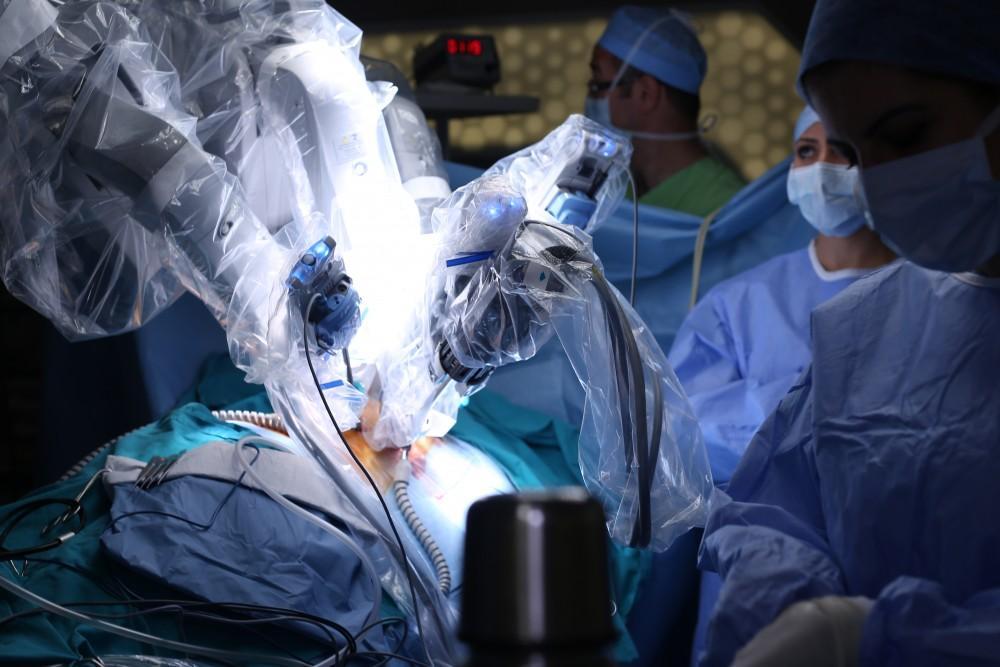Hernia repair techniques have evolved significantly over the years, and robotic surgery is now at the forefront of minimally invasive options. From improved visualization to enhanced control and ergonomics, robotic hernia surgery offers surgeons a set of tools that elevate both the quality and safety of surgical procedures. This technique allows for greater precision, particularly in complex or recurrent hernia repairs. As more surgical teams embrace robotics, the results speak for themselves: shorter recovery times, lower complication rates, and consistent surgical success.
Enhanced Precision and Control
1. Tremor Filtration for Steady Movements
One of the key advantages of robotic surgery is its ability to filter out a surgeon’s natural hand tremors. Even the slightest unintended movement is neutralized by the robotic system, allowing for extremely steady and controlled instrument motion. This feature is especially important when working near delicate structures or when placing sutures with precision. The result is a more refined surgical technique that minimizes tissue trauma and enhances overall repair integrity.
2. Increased Range of Motion
Robotic arms mimic the movement of the human wrist but offer greater flexibility with a wider range of motion. They can rotate and pivot in ways the human hand cannot, enabling access to hard-to-reach areas of the abdomen. This expanded movement is particularly valuable during hernia repairs that require maneuvering around organs or through narrow tissue planes. It empowers surgeons to perform intricate tasks with confidence and control.
3. Surgeon Console Control
Unlike traditional laparoscopy, robotic surgery places the surgeon at a specialized console equipped with high-precision controls. The system translates the surgeon’s hand, wrist, and finger movements into exact instrument actions inside the patient’s body. This intuitive control provides seamless interaction with the surgical field, reducing unintended motions.
Better Visualization of Surgical Field
1. 3D High-Definition Imaging
Robotic systems are equipped with high-definition cameras that offer a three-dimensional view of the surgical site. This advanced imaging technology provides exceptional clarity and depth perception, which are crucial for accurately identifying anatomical structures. Unlike traditional 2D laparoscopic views, this enhanced visualization allows for more precise dissection and mesh placement. Surgeons can work more safely and confidently, particularly in anatomically complex areas.
2. Depth Perception and Zoom
The robotic system’s camera can zoom in on small structures without sacrificing image quality. This feature is particularly helpful in distinguishing tissue layers and avoiding blood vessels during dissection. Depth perception also allows for better judgment when manipulating instruments in confined spaces. These improvements significantly reduce the risk of injury and increase surgical accuracy.
Reduced Surgeon Fatigue
1. Seated Ergonomic Positioning
Surgeons perform robotic procedures from a seated console, which alleviates the physical strain commonly associated with standing for hours during traditional surgery. This ergonomic setup reduces back, leg, and neck fatigue, especially in long or complex cases. A more comfortable surgeon is less likely to experience performance decline over time. This translates into better attention to detail and a safer surgical experience for the patient.
2. Lower Risk of Musculoskeletal Strain
Traditional surgery often leads to cumulative physical stress on a surgeon’s joints and muscles, especially the shoulders and neck. Robotic systems minimize awkward positioning by allowing natural, relaxed movements through the console interface. Over the long term, this helps reduce the risk of occupational injuries and prolongs a surgeon’s career. It also allows for more sustainable performance in high-demand surgical environments.
3. Improved Focus During Long Procedures
With less physical discomfort, surgeons are able to maintain mental clarity and concentration throughout the duration of the procedure. This is especially important in complicated hernia repairs, which may require meticulous dissection and suturing. Fatigue can contribute to surgical errors, but robotic platforms reduce that risk by creating a more manageable environment. As a result, patient safety and surgical precision are both improved.
Improved Outcomes in Complex Cases
1. Ideal for Recurrent Hernias
Patients who have undergone previous hernia repairs often present with scar tissue and altered anatomy. Robotic tools enable surgeons to carefully navigate these areas with enhanced control and visibility. This allows for safe dissection around delicate or compromised tissues. Using robotics helps lower the risk of complications and improves long-term repair durability.
2. Effective in Large Hernia Defects
Repairing large hernia defects requires extensive tissue manipulation and mesh placement, which is better facilitated with robotic precision. The ability to suture and reinforce the area effectively ensures a stronger repair. Robotic instruments allow the surgeon to work across broader surfaces without increasing patient trauma. This reduces the chances of recurrence and accelerates healing.
Consistent Surgical Technique
1. Standardized Movements Across Cases
Robotic systems ensure that the instruments respond consistently to a surgeon’s commands across different procedures. This reduces variability in technique and promotes a high standard of care. Whether the case is routine or complex, patients benefit from reliable, repeatable performance. Consistency contributes to better outcomes and fewer surgical surprises.
2. Useful for Surgeon Training and Replication
Many robotic platforms include software that records procedures and tracks performance metrics. These tools are invaluable for training new surgeons and refining techniques. Surgeons can review footage, analyze performance, and improve their methods over time.
3. Reduced Variability in Results
Robotic assistance minimizes the factors that can lead to inconsistent results, such as fatigue, visual limitations, or hand instability. As a result, patients receive a high-quality repair regardless of individual surgeon differences. This predictability improves patient trust and reduces post-operative complications. The goal is always a faster recovery and a lower rate of hernia recurrence.
Conclusion
From the operating room to the patient’s recovery, robotic hernia surgery offers a range of advantages that enhance every stage of the surgical process. Surgeons benefit from greater precision, less fatigue, and more consistent outcomes—especially in challenging cases like recurrent or large hernias. As more healthcare facilities adopt this approach, patients can feel confident they’re receiving one of the most modern and effective treatments available for hernia repair.






